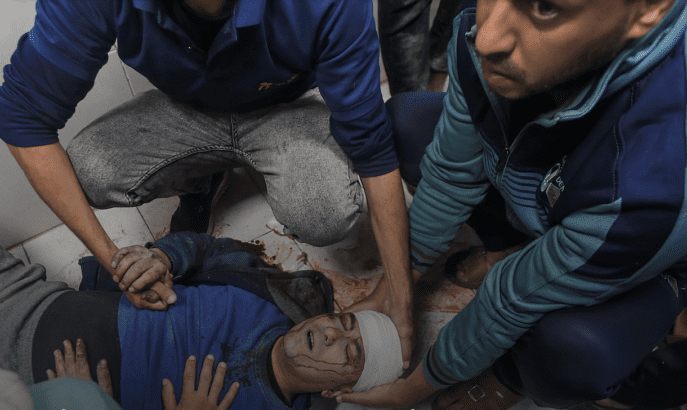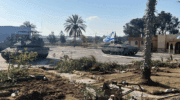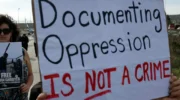Bleeding out from moderate shrapnel wounds. Dying from illnesses doctors don’t have time to treat. Going blind waiting for medical evacuation abroad. These are the manifold victims of Israel’s war on Gaza’s health system.
by Mahmoud Mushtaha, reposted from +972 Magazine, April 3, 2025
In recent days, details have emerged about a particularly gruesome Israeli massacre targeting Palestinian medical teams in southern Gaza. On March 23, a team of Red Crescent and Civil Defense personnel were sent on a mission to rescue colleagues who had been targeted earlier in the day in the Rafah governorate. At a certain point, contact with the team was lost, and they were assumed dead.
But it wasn’t until days later, when joint crews from the UN Office for the Coordination of Humanitarian Affairs (OCHA), the Red Crescent, and the Civil Defense gained access to and exhumed the site that the full horror was revealed: zip-tied hands and feet, signs of execution at point-blank range, and bodies mutilated beyond recognition. These were not casualties of crossfire. Israeli forces had executed them in cold blood, before using a bulldozer to bury their crushed vehicles on top of their bodies.
“We’re digging them out in their uniforms, with their gloves on,” Jonathan Whittall of OCHA said in a statement after the mass grave was discovered in Tel Al-Sultan. “One of them had his clothes removed, and another one was beheaded,” Mahmoud Basal, a spokesperson for the Civil Defense, explained.
According to the Gaza Media Office, the Israeli army has killed 1,402 medical workers since October 7, making it one of the deadliest campaigns against health workers in modern history. The targeting of medical personnel is part of a wider assault on Gaza’s health care infrastructure: 34 hospitals have been destroyed and forced out of service, along with the 240 health centers and facilities and 142 ambulances that have also been targeted. The total damage to the health sector is estimated to exceed $3 billion, leaving it utterly incapable of meeting the urgent needs of a population trapped under siege and bombardment.
Over the course of the war, Israeli forces have also raided multiple medical facilities and converted them into military outposts, as documented by a recent Human Rights Watch investigation. Major hospitals including Al-Shifa and Nasser were not only raided but occupied, endangering patients and staff, resulting in the death of patients who were forcibly removed or left without treatment.
These actions, combined with the broader blockade and deprivation of essential aid, reflect a deliberate strategy of dismantling Gaza’s health care system — a tactic that may amount to crimes against humanity, including extermination and acts of genocide.
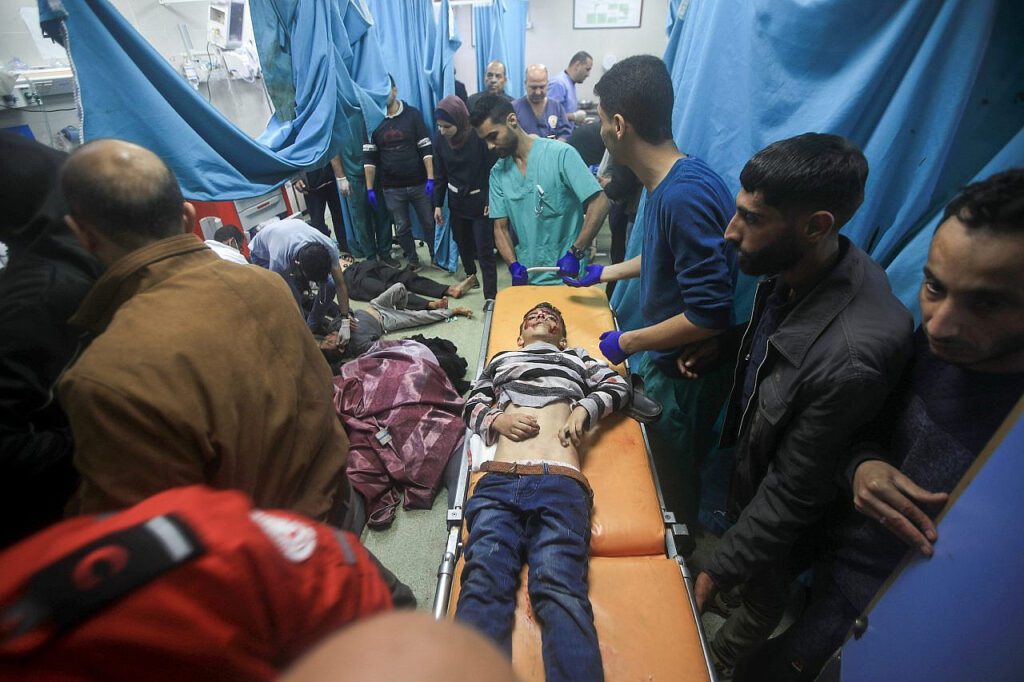
During the recent ceasefire, Gaza’s medical facilities were teetering on the edge, disabled by the aftermath of sustained Israeli attacks for 15 months. But with the resumption of Israel’s military campaign and a full blockade on the Strip, Palestinian hospitals in the Gaza Strip have declared that the devastated health care system has now entered a state of “clinical death.”
Dr. Mohammed Zaqout, director-general of field hospitals at the Health Ministry, warned that Israel’s ongoing war is worsening what he called “an already unbearable humanitarian crisis.” He stressed that the continued closure of border crossings by Israeli forces has blocked the entry of desperately needed medicines, medical equipment, and fuel.
The scenes inside Gaza’s hospitals no longer resemble medical facilities. Patients lie strewn across floors slick with blood, their wounds left untreated. Some gasp for air as oxygen runs out; others lie in silence, waiting for relief that will never come. It is a health system not just under siege, but deliberately dismantled.
“Our hospitals are overwhelmed, and we’re running out of everything,” Zaqout said. “We’re not just talking about shortages — we’re talking about total absence.”
‘We use our bare hands and flashlights — it’s medieval’
What once served as a vital network of hospitals, clinics, and referral pathways in Gaza has been reduced to a shattered landscape of field tents, overcrowded shelters, and makeshift wards. These are often without electricity, clean water, or basic medical supplies. The remaining doctors, under siege and targeted alongside their patients, are working far beyond human capacity, operating with little more than gauze and determination.
Still, medical teams are continuing to do everything in their power to help their patients. “We don’t have the luxury to rest,” Dr. Ahmed Khalil (a pseudonym), a physician who has spent the past 540 days moving between bombed hospitals, told +972. “We treat patients on the floor, without electricity, without anesthesia. We use our bare hands and flashlights — it’s medieval.”
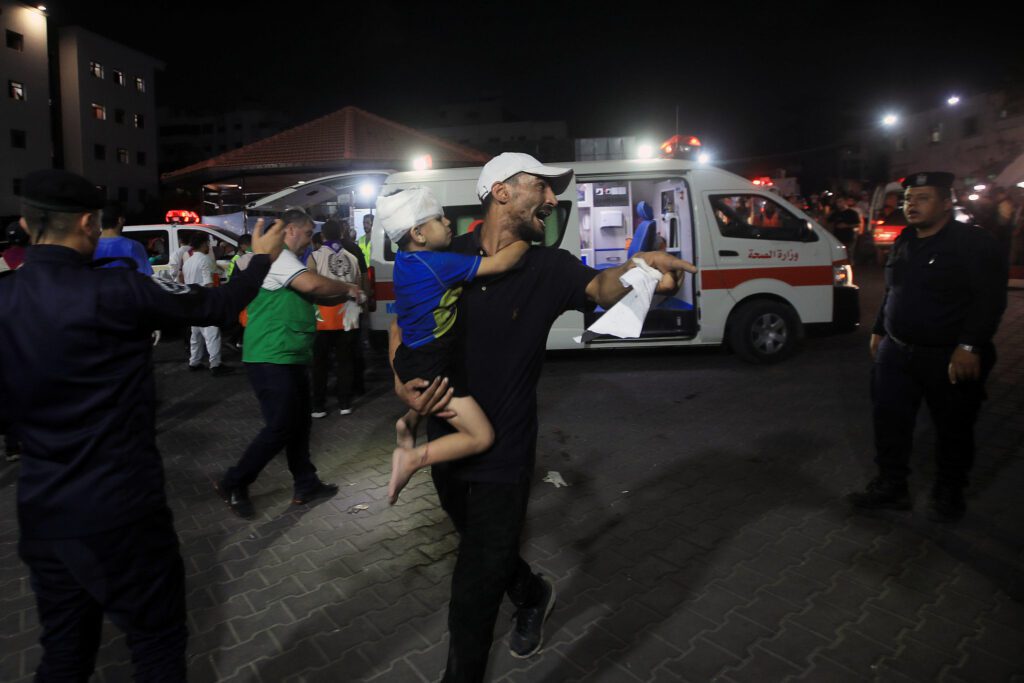
In March 2024, Israeli forces surrounded and besieged Al-Shifa Hospital in Gaza City — the enclave’s largest medical facility — for a second time, cutting off access to food, fuel, and medical supplies. Trapped inside for days, Khalil watched it transform from a bustling center of care into a military target. “We were surrounded by tanks, drones buzzing overhead, no power, no food. We were operating by the light of mobile phones,” he recalled.
“When the oxygen machines began to fail and the heart monitors went dark, I knew we were no longer in a hospital,” Amna, a 32-year-old nurse who has worked at Al-Shifa for around 10 years, told +972. “We were inside a mass grave in the making.”
Amna had lived through previous wars and sieges, but what happened that month, she said, was unlike anything before. “There were too many of them,” she recalled. “We had to make impossible choices — who to treat first, who we could try to save, and who we had to let go. Many died not because their injuries were too severe, but because there were no machines, no space, no hands left to help.”
When Israeli forces invaded Al-Shifa, Khalil — along with patients, staff, and displaced civilians — was forced to evacuate under fire. His path southward led through flattened neighborhoods and overcrowded shelters, until he reached Nasser Hospital in Khan Younis, one of the last semi-functioning medical centers in Gaza. But even there, the conditions were nightmarish.
“People were bleeding out in the hallways,” he says. “There was no morphine. No antibiotics. Sometimes, not even gauze.” The medical teams were unable to save many injured people waiting to be admitted to intensive care units. “I saw patients — children, the elderly — die while waiting in line for help that never came.”
One memory still haunts Dr. Khalil: a young man around 20 with shrapnel wounds to the abdomen, carried in by relatives on a piece of plywood. “We had no imaging, no operating room, no pain relief. He died within the hour — not because we didn’t know how to save him, but because we had nothing to save him with.”

The conditions Khalil and his colleagues have endured would be unimaginable in any other context. “We’ve operated after 48 hours without sleep,” he said. “We haven’t eaten — there’s no food. Sometimes we work entire shifts without a drop of clean water. We work while our own families are displaced or buried. Sometimes we treat patients knowing there’s no chance, but we try anyway. Because we have to.”
Bombs fall nearby as surgeries are conducted; the whirring of drones and the screams of the wounded echo through darkened corridors. “We’re not just treating trauma — we’re living it,” Khalil added. “We are the wounded treating the wounded. But we refuse to let our people die alone.”
‘No one had time for someone who wasn’t bleeding’
According to the Health Ministry in Gaza, more than 50,000 Palestinians have been killed since October 7. Yet those numbers do not capture the full scale of the crisis: many additional deaths could have been prevented if Gaza’s health system had not been dismantled piece by piece.
On March 2, 2025, Haithm Hasan Hajaj, a 41-year-old civil engineer and father of three, died in northern Gaza after months of suffering from a treatable illness — one of many silent deaths amid a destroyed health system, where medical needs become impossible requests.
His wife, Mona, still can’t accept it. “He wasn’t killed in an airstrike. He died slowly, quietly, because no one could help him,” the 37-year-old told +972, holding back tears. “We searched for help for nine months. We begged for a diagnosis, for medicine, for anything. But there was nothing.”
Hajaj’s symptoms began in July 2024: sudden stomach pain, fatigue, and unexplained anaemia. “At first, we thought it was stress from the war and starvation,” Mona said. “But within weeks, he could barely stand. We went from place to place, but every hospital was overwhelmed. They told us: ‘We’re only treating war injuries.’ No one had time for someone who wasn’t bleeding.”
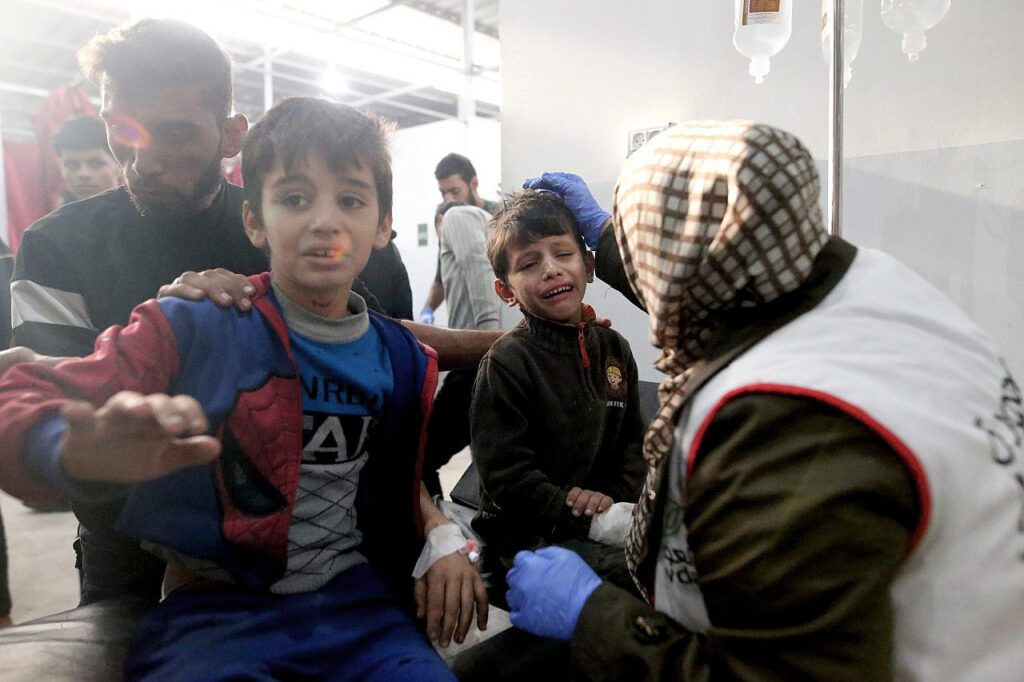
Trapped in the north under siege, they had no access to specialists or functioning labs. “One day we went to the Baptist Hospital,” Mona explained. “We waited from 6 a.m. to 10 p.m. — 16 hours in a queue. But they turned us away. The lab had no materials. They couldn’t even do a blood test.”
As the months passed, Hajaj’s condition worsened. His skin broke out in painful rashes. He lost 30 kilograms. “By January, he was skin and bones. My children were scared to touch him — not because they were afraid [of him], but because they could see he was hurting.”
Finally, in the seventh month of his decline, they learned he had coeliac disease, a condition triggered by gluten. The solution should have been simple: remove wheat from his diet. But in Gaza, there was no alternative. “All we had was wheat, and even that was scarce,” Mona said. “We didn’t even know. For months he was eating what was slowly killing him, just to survive.”
Two months later, Hajaj died — not from coeliac disease itself, but from the absence of everything Gaza could no longer provide: diagnostic tools, treatment, food security, and dignity. Their children, aged 9, 11, and 13, now ask questions Mona doesn’t know how to answer. “They keep asking when Baba is coming back,” she said. “The little one told me, ‘We can share our bread with him now. Maybe that will make him better.’ How do you explain to a child that their father died because we couldn’t even find bread that wouldn’t hurt him?”
Before the war, Hajaj was close to completing his PhD. “He only had a few months left,” Mona said. “He had dreams. He wanted to teach. He wanted to build something for this country. We had bought a home in Tel Al-Hawa a year before the war. We learned last November that it was destroyed in an airstrike. But Haithm didn’t complain. He just said, ‘We’ll build again — for the kids.’” She paused, choking up. “But now he’s gone. And I don’t know how to rebuild without him. How can I live without him?”
Their 13-year-old son, Hasan, is trying to fill his father’s place. “Hasan wants to be the man of the house, to help his youngest brother and sister,” Mona said. “Yesterday, he came back from the street in tears, sobbing, saying, ‘I wish I died with Baba. I don’t want to live like this.’ He had gone to try and find food for us, but he couldn’t. He’s only a child. He’s terrified to walk alone in the street with the bombs falling. He needs his father — we all do. I don’t know how to make them feel safe again.”
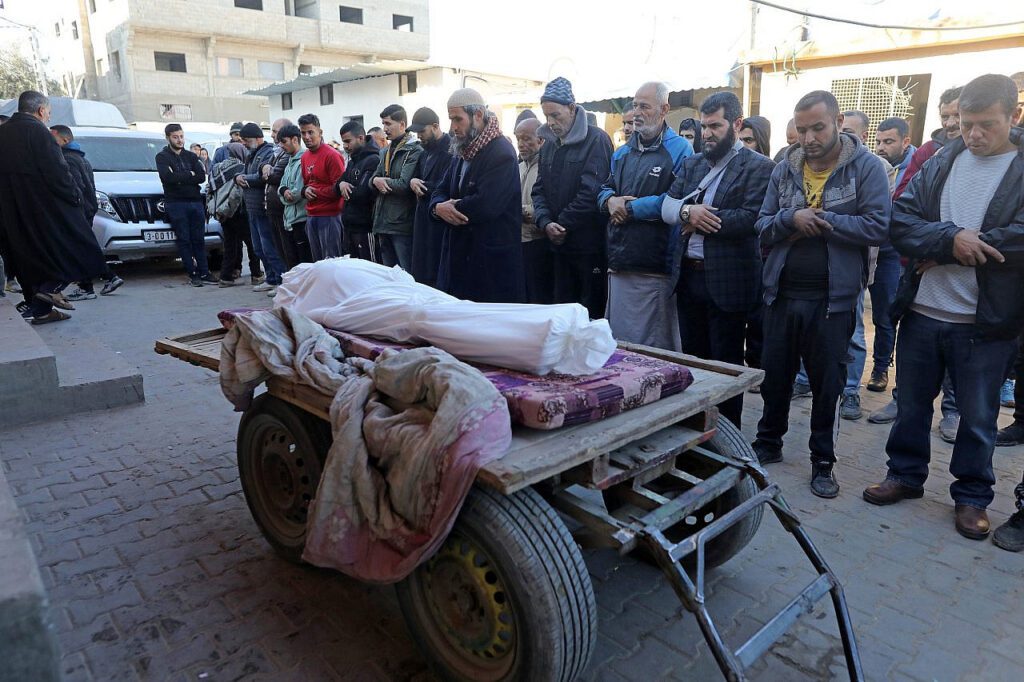
‘This isn’t just about medicine. It’s about dignity’
For 64-year-old Nabil Zafer (full disclosure: the author’s uncle), the war didn’t take his life — but it took his sight, his independence, and his role as the provider for a family already struggling to survive.
Before the war began, Zafer was receiving regular treatment for severe glaucoma. Twice a week, he would visit the hospital for eye injections to manage the pressure and preserve what remained of his vision. He was also scheduled to travel to Egypt in February 2024 for a surgery to install drainage valves in his eyes, a relatively straightforward procedure that could have saved his vision.
But in late 2023, amid Israel’s intensifying assault, access to eye injections inside Gaza became almost impossible. And with no functioning referral system, Zafer couldn’t make it out — one of more than 10,000 Gazans whose requests for medical evacuations were never approved during the first year of the war. “The doctors told us: ‘If he doesn’t get the surgery soon, he’ll lose his sight’ — and then it was too late,” his wife, Hanan, told +972.
“At first, he started seeing shadows,” the 58-year-old continued. “Then things blurred completely. Day by day, we watched his vision fade. By last November, he was completely blind.”
The loss of his vision has changed every aspect of Zafer’s life and deeply impacted his family. He was the sole provider for a household already marked by hardship: two sons, Hani and Sarah, both living with disabilities; a widowed daughter; and Hanan herself.
“He used to do everything,” she said. “He fixed things around the house, walked to get food, and helped the sons. Now he can’t even see their faces.”
Zafer’s days are now filled with silence and fear. “He always asks me, ‘What if we have to evacuate again? Who will help me? Who will guide me?’” Hanan said. “He tells me, ‘Leave me behind — just don’t leave Hani and Sarah. Make sure they’re safe. That’s all I want.’”
Sometimes, he sits near the window and asks her to describe the street — the people, the sky, the trees. “He wants to remember what the world looks like,” she said, her voice trembling. “But even more than that, he misses seeing our children.
“He keeps asking, ‘When will the border open? Maybe I can still go?’” Hanan continued. “But deep down, we both know there’s nothing waiting on the other side. This isn’t just about medicine. It’s about dignity — and it’s being taken away from us day by day.”
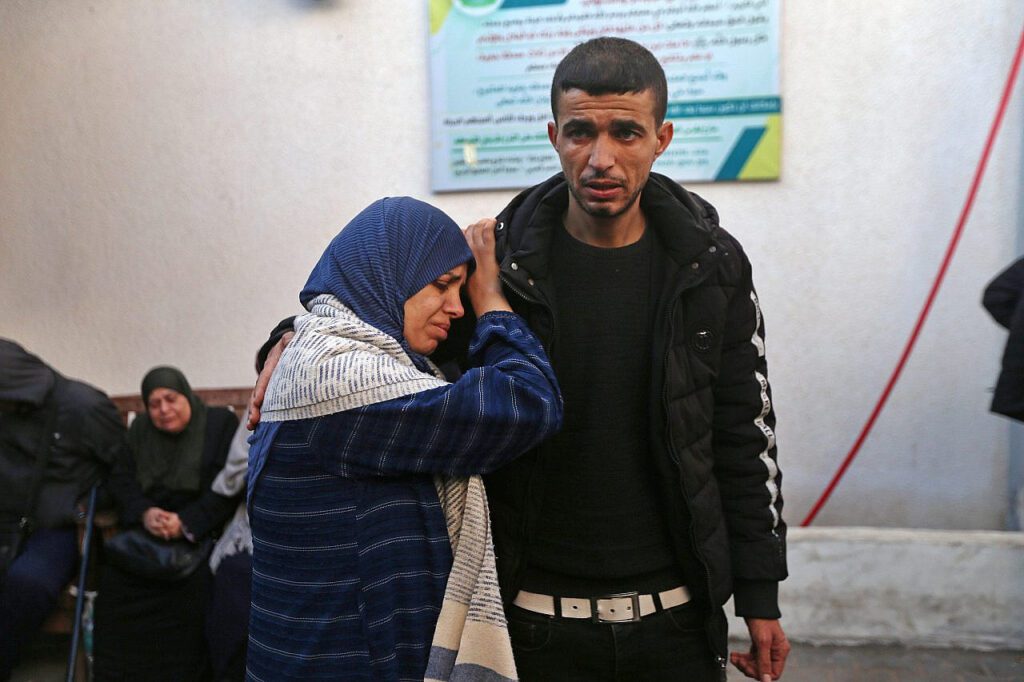
‘All I wish for is to leave Gaza before it’s too late’
For the past six months, 19-year-old Ata Ahmed (a pseudonym) has been lying flat on his back in a tent, paralyzed from the waist down. His life changed in an instant on Sept. 12, 2024, when an Israeli airstrike hit a neighboring home in Gaza City’s Shuja’iyya neighborhood. Shrapnel from the blast tore through his spine, leaving him with permanent damage and a long list of complications. He has since undergone several surgeries — but doctors say they’ve done all they can.
“Every day, I feel my condition getting worse,” Ata told +972. “I applied for a referral to be treated abroad over months ago; I can’t wait much longer. All I wish for is to leave Gaza and get proper treatment before it’s too late. The ceasefire gave me hope, but now I feel as if everything is closed.”
Ata is just one of nearly 35,000 wounded and chronically ill Palestinians in Gaza currently stuck on medical evacuation lists. With hospitals crippled by repeated bombardments, severe shortages, and the total collapse of medical infrastructure, thousands are being denied access to life-saving care. According to Gaza’s Health Ministry, at least 40 percent of those who applied for treatment abroad since the war began have died while waiting — victims of closed borders, a broken referral system, and a health care system that no longer functions.
At Nasser Medical Complex in Khan Younis, one of the last partially operating facilities in southern Gaza, 81-year-old Umm Saeed Ghabaeen leans back in a plastic chair, visibly drained as another dialysis session begins. She has been battling kidney failure for three years, dependent on routine dialysis to survive. But since the war began, her condition has deteriorated sharply. Forced displacement, severe medicine shortages, and even a lack of clean water have placed her life in constant jeopardy.
“Since we fled our home, everything has changed,” she said. “The sessions are shorter. The machines are fewer. The care is weaker. And I feel more tired every day.”
With only a few dialysis units still operational in the south, hospitals have been forced to reduce the number of weekly sessions and shorten their duration — a dangerous compromise, especially for elderly patients. Doctors warn that these changes could result in a wave of avoidable deaths.
“We’re being pushed to the edge,” Ghabaeen said. “Some days I wonder if I’ll survive until the next session.”
Mahmoud Mushtaha is a journalist and human rights activist from Gaza. He is currently pursuing an MA in Global Media and Communication at the University of Leicester, UK. Recently, he published his first book in Spanish, “Sobrevivir al genocidio en Gaza.”
RELATED ARTICLES:
- On the frontlines of hell: Testimonies from Gaza’s doctors
- ‘Every Atrocity Imaginable’: Litany of Israeli War Crimes Continues
- A brief history of Israel’s theft and trafficking of Palestinian organs
- Asbestos dust threat looms over much of Gaza
- The Last Chapter of the Genocide
- Meet the Washington Post’s Leading Apologist for Israeli Genocide
- Israel’s War Decimated Gaza’s Farmlands and Killed Most of its Livestock
- Israel’s bombing of Gaza caused untold environmental damage − can it recover?

